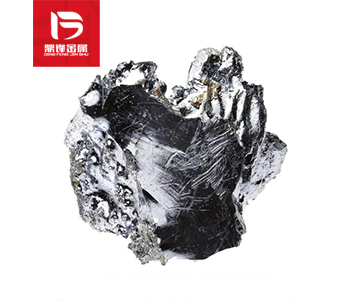
Osmium Alloy Recycling
Osmium alloys are alloys composed of osmium and other metallic elements such as platinum, iridium, and palladium. Waste osmium alloys are one source of osmium waste recycling. Other sources of osmium waste recycling include osmium powder recycling, osmium pellet recycling, osmium block recycling, osmium target recycling, and osmium iridium alloy recycling.
- Parameter
- Related Questions and Answers
-
Name : Osmium Alloy
-
Use : Manufacture of highly wear-resistant parts, precision instruments, electronic components, etc.
-
Application Areas : Aerospace, electronics industry, etc.
-
Appearance and properties : Alloy
-
Settlement Method : On-site payment
-
Recycling Type :Osmium recycling
-
Door-to-door recycling:worldwide
-
Customer service: Free content testing and door-to-door recycling
Osmium Target Recycling
Osmium targets are targets made of high purity osmium metal and are commonly used in high-tech fields such as physics, chemical experiments, thin film deposition, etc. Waste osmium targets are one of the raw materials for precious metal target recycling. Precious metal target recycling also includes germanium target recycling, ruthenium target recycling, silver target recycling, platinum target recycling, iridium target recycling, palladium target recycling, etc.
Search : Osmium Target RecyclingOsmium Alloy Recycling
Osmium alloys are alloys composed of osmium and other metallic elements such as platinum, iridium, and palladium. Waste osmium alloys are one source of osmium waste recycling. Other sources of osmium waste recycling include osmium powder recycling, osmium pellet recycling, osmium block recycling, osmium target recycling, and osmium iridium alloy recycling.
Search : Osmium Alloy RecyclingOsmium Powder Recycling
Osmium powder is a fine granular material made from osmium metal by special methods such as high-temperature reduction and mechanical grinding. Waste osmium powder is one of the raw materials for osmium waste recycling. Osmium waste recycling also includes osmium-iridium alloy recycling, osmium alloy recycling, osmium target recycling, osmium block recycling, osmium particle recycling, osmium ingot recycling, osmium powder recycling, osmium oxide recycling, etc.
Search : Osmium Powder RecyclingAmmonium Chloride Recycling
Ammonium hexachloroosmate is an osmium-containing compound with the chemical formula (NH)[OsCl]. It is an ammonium salt formed by the reaction of osmium metal with hydrogen chloride and ammonium chloride, and usually appears as a reddish-brown or orange-red crystalline powder. Discarded ammonium chloroosmate is one of the raw materials for osmium waste recycling. Osmium waste recycling also includes osmium powder recycling, osmium iridium alloy recycling, osmium alloy recycling, osmium particle recycling, osmium target recycling, osmium chloride recycling, etc.
Search : Ammonium Chloride RecyclingProduct Details
Osmium alloys are alloys composed of osmium and other metallic elements (such as platinum, iridium, and palladium). Osmium is a rare, extremely hard, and dense precious metal, and is often used in alloys to improve hardness, wear resistance, and corrosion resistance. Osmium alloys are extremely resistant to high temperatures and are often used to manufacture wear-resistant parts, precision instruments, electronic components, and catalysts. Osmium is rare and resistant to oxidation, so osmium alloys are often used in industrial applications that require high performance and special environments, such as high-precision measuring tools, aerospace, and certain special catalytic reactions. Osmium alloys are also used to manufacture high-density materials for protection due to their high density.
Common types of osmium alloys include:
1. Osmium-Platinum Alloys: Osmium-platinum alloys are the most common type and are usually used to manufacture high-temperature and wear-resistant precision instruments and tools. Platinum improves the processing performance and oxidation resistance of osmium alloys, and enhances their stability in high-temperature environments. It is widely used in chemical catalysts and high-precision weighing instruments.
2. Osmium-iridium alloy: Osmium and iridium alloys are very suitable for use in high temperatures and harsh environments. Iridium itself has excellent corrosion resistance and high temperature resistance, and can be combined with osmium to further improve the stability and hardness of the alloy. Osmium-iridium alloys are often used in the manufacture of high-performance contact materials, wear-resistant parts, and aerospace parts.
3. Osmium-palladium alloy: Osmium-palladium alloys usually have high electrical conductivity and good mechanical strength, making them suitable for the manufacture of high-temperature electrical contact materials and catalysts. This alloy is often used in electronic devices, high-temperature sensors, catalytic reactions, etc.
4. Osmium gold alloy: Osmium gold alloys are usually used in some high-end electronic components and precious metal ornaments. Gold improves the corrosion resistance of the alloy, and the hardness and density of osmium give the alloy excellent mechanical properties. This alloy is often used in special electronic components and jewelry.
Waste osmium alloy is one of the recycling sources of osmium waste. Other recycling sources of osmium waste include osmium powder recycling, osmium pellet recycling, osmium block recycling, osmium target recycling, osmium iridium alloy recycling, etc. If you need to recycle osmium-containing waste, please contact our 24-hour service hotline. Dingfeng Precious Metals Recycling Refining Factory has its own recycling refinery that does not place middlemen to make profits on price differences, and has a professional technical team and customer service staff to provide one-to-one service and ensure customer privacy during the recycling process.

